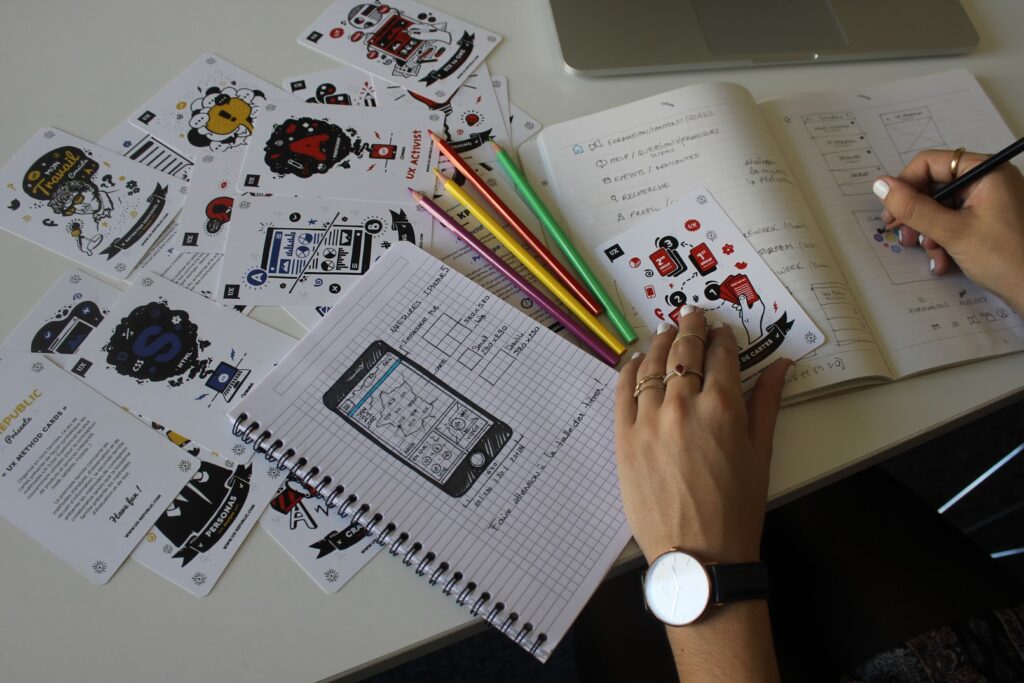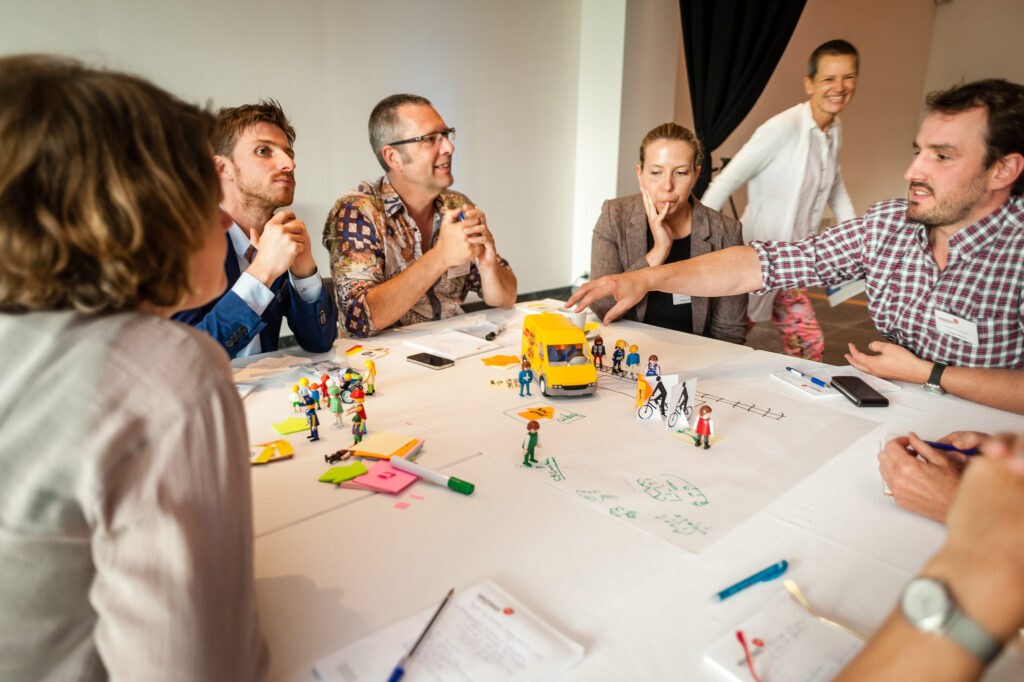How to succeed in a good workshop according to the excellent book “Gamestorming” by David Gray, James Macanufo, and Sunni Brown.
Prepare well for your workshop
First of all, it is important to settle down comfortably to reflect. What is the purpose of the workshop? What does he bring to the project? Who should I involve? How to set up a pleasant working environment?
After listing the challenge and the added value of the project, the ideal is to map the participants. This workshop is called Stakeholder analysis.
Draw 2 axes: involvement and responsibility for the project.
Then show the diagram to your referrer. This makes it possible to be exhaustive and to quickly identify the roles of each. Are you hesitating to invite a specific person? It is better to invite him. The person will thus be informed of the workshop and the progress of the project. It is up to her to make herself available.

By the way, have you ever invited 20 participants and ended up with 7? To limit absenteeism, I recommend the 1-1 booking rule.
For a workshop of 5 people, issue an invitation at least 5 days in advance. For 10 people, 10 days in advance, etc.
Before sending the invitation, do not hesitate to say hello to those interested and to confirm if the slot suits them. Generally, I buy a few chouquettes and spend an hour or two organizing a workshop. It's long but the involvement of the participants is priceless!
don't forget to send an email a few days before to all the participants with:
- the challenge of the workshop
- the list of participants
- why participants are invited
- what is expected of participants (reflection, specific document to be prepared in advance, etc.)
On the practical side, provide pens, markers, white sheets, posters to hang, cups and thermos of tea/coffee for a relaxed atmosphere conducive to work.
Formalize ideas live
The workshops are often friendly. They bring together people who work on other projects together. How to make sure that the conversations do not drift?
To stay focused on the problem, it is better to draw everyone's attention to a specific space: the famous techniqueand post-itst always effective.
Take a marker and write in capitals one idea per post-it. Do not hesitate to clarify each idea so that everyone assimilates it: “How does it work ? Can you give me an example? ” See the reaction of the participants as you complete the table.
This technique allows visualize the idea and get all the participants to agree on content. For simplicity and consistency, organize your table as you go. Group the post-its by column and give each column a name. Frustrating a participant happened so quickly. All out-of-scope ideas can be showcased in a space called “Good idea for later”.

If you feel the adventurous spirit, do not hesitate to sketchnoter live to transcribe the words some participants. This technique seems difficult at first sight but nobody will blame you if you are not Leonardo da Vinci and it has the advantage of involving the participants more.
Tips for sketchnoting
Get everyone involved
There are plenty of little techniques to break the ice. Feel free to make a thermos of coffee and buy some pastries. Don't feel like spending 10 euros? Put yourself in the place of the participants, it's so nice to attend a meeting and see that you are taken care of.

Each will then stick their user to the wall. This short mission allows to quickly introduce the key concept while uninhibiting all the participants on their level of drawing.
To give a voice to everyone, including introverted people, it is useful to carry out reflection sessions where participants are invited to write on a post-it or draw something.
David Gray presents a hundred Gamestorming workshops to add a little fantasy to your workshops such as bodystorming et the Anti-problem. The idea is to do manual activities and races against the clock to generate ideas and optimize the efficiency of the workshop.
Preparing your workshop well also means leaving room for the unexpected. During a session, beginners often make the mistake of putting on their expert cap and controlling everything. It is important to let the participants express themselves even if they drift a little or if their remarks are not quite right with regard to the problem. It is best to examine, explore and experiment as much as possible to engage participants and get creative responses.
Introduce and close the workshop
A workshop, it's like a story with a beginning, a plot flow and an end.
Writers will tell you, the intro and ending are often the hardest. A good workshop lasts 2 hours maximum:
- 15 minute intro
- 30min of reflection
- 30 min return
- 30min categorization
- 15 min wrap up.
The introduction helps to arouse the attention of your interlocutors. Explain the end users, the problem and what you expect from the participants. During the opening phase, explain that there are no “bad ideas”. Ask participants for as many ideas as possible. At this stage, the quantity of information is more important than the quality.
During the reflection, explore in depth the concepts in line with the problem.
After the refund, sort and organize ideas into different categories. Then, prioritize “Must have” or “Nive to have” via a show of hands voting system.
You can also distribute a sum (20 stickers, 100 dollars in monopoly ticket) and ask everyone to stick or place the sum next to the post-it. Last but not least, the must is to close with the “Next Step” game. It consists of listing all the participants, assigning each a task to perform.
Always enter the column “Who?" before "Actions”In order to strengthen group cohesion and evenly share tasks.
Finally, ask everyone for a realistic deadline.
Here you are, you have finished your workshop and you have a nice well-organized post-it board and an action plan for the future. Thank everyone and let them know what's next.
In conclusion, a useful workshop for a project is a well-prepared workshop, which involves the right participants, which leaves room for imagination, which does not last too long and which results in two deliverables: an organized mind map and a realistic action plan.
UX/UI ECO-DESIGN # Paris
SMILE Paris
163 quay of Doctor Dervaux 92600 Asnières-sur-Seine
DESIGN THINKING: CREATING INNOVATION # Belgium
UX-REPUBLIC Belgium
12 avenue de Broqueville - 1150 Woluwe-Saint-Pierre
MANAGING AND MEASURING UX # Paris
SMILE Paris
163 quay of Doctor Dervaux 92600 Asnières-sur-Seine
DESIGN SPRINT: INITIATION & FACILITATION # Paris
SMILE Paris
163 quay of Doctor Dervaux 92600 Asnières-sur-Seine
UX-DESIGN: THE FUNDAMENTALS # Belgium
UX-REPUBLIC Belgium
12 avenue de Broqueville - 1150 Woluwe-Saint-Pierre
GOOGLE ANALYTICS 4 #Paris
SMILE Paris
163 quay of Doctor Dervaux 92600 Asnières-sur-Seine
ACCESSIBLE UX/UI DESIGN # Belgium
UX-REPUBLIC Belgium
12 avenue de Broqueville - 1150 Woluwe-Saint-Pierre
EXPERIENCE MAPPING # Paris
SMILE Paris
163 quay of Doctor Dervaux 92600 Asnières-sur-Seine












